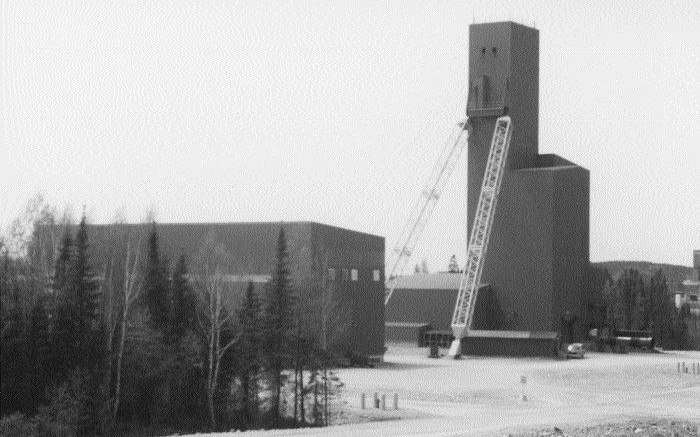Agnico-Eagle Mines (AEM-T, AEM-N) continues to build on its impressive assets with the announcement that it will go ahead with its LaRonde II project in northwestern Quebec.
While the move doesn’t come as a surprise — with gold reserves at LaRonde II of 3.6 million oz. from 18.8 million tonnes grading 6 grams gold per tonne, the announcement was a foregone conclusion — the additional capital costs may have exerted some downward pressure on its share price.
Following the news in mid-May, the company’s shares were off 4.7% or roughly $2.00 to $41.24 on just over 810,000 shares.
But Haytham Hodaly, an analyst with Vancouver-based Salman Partners says the shares’ retreat — which coincides not only with the announcement of LaRonde II but also with first-quarter earnings — likely has more to do with a pullback on base metal prices combined with a slight decline in gold and silver prices.
That’s because Toronto-based Agnico-Eagle produces significant copper, zinc and silver byproducts from its flagship LaRonde mine in Quebec.
David Smith, director of investor relations for the company, says compared with many of its peers, Agnico-Eagle is performing quite well, despite a modest dip in metal prices.
As for first-quarter earnings, Hodaly says they were in line with analysts’ expectations, with the exception of cash costs — which were better than expected.
Agnico-Eagle has established itself as one of the lowest-cost gold producer — thanks largely to the credits it receives for its byproducts. Cash costs at LaRonde came in at $57 per tonne, in line with the company’s guidance for the quarter.
But the cash cost for an ounce of gold, after byproduct credits are factored in, drops to a company record of minus US$241.
Hodaly says the company is poised for strong growth.
The most significant driver of such growth is the LaRonde II project. The project is an extension beneath the LaRonde mine, and in keeping with its older sibling, will dig more than just gold out of the ground.
The deposit contains roughly 13 million oz. silver, 62,000 tonnes copper and 155,000 tonnes zinc.
A recent feasibility study estimates an after-tax rate of return of 13.3%, based on a gold price of US$450 per oz., a Canadian-U.S. exchange rate of 1.25 and byproduct prices of US$6.50 per oz. silver, US$3,086 per tonne copper and US$1,213 per tonne zinc.
With operating costs of US$67 per tonne, processing 6,000 tonnes a day, the project will not enjoy the same low costs as the original LaRonde.
Although fewer byproducts at LaRonde II mean fewer credits, the company says the average gold grade for the deeper mine will be 80% higher.
Annual byproduct production is expected to average 670,000 oz. silver, 4,000 tonnes copper and 8,600 tonnes zinc, but it’s the annual gold production of 320,000 oz. that is fuelling the company’s bullishness on the expansion.
Capital costs for the project will be US$210 million with average sustaining capital expenses of roughly US$12 million per year.
With strong first-quarter earnings, Agnico-Eagle says it will fund LaRonde II from existing cash.
First-quarter earnings were US$37.2 million, or US35 per share, compared with net earnings of US$10.4 million, or US12 per share, in the first quarter of 2005.
Agnico-Eagle has cash and cash equivalents of US$154.9 million, up from US$121 million at year-end 2005.
Beyond LaRonde II, the company is developing the Goldex mine in Quebec, and has feasibility studies in progress on Lapa, also in Quebec, Suurikuusikko, in Finland, and Pinos Altos, in Mexico.
In a release, chief executive and vice-chairman Sean Boyd says the company is intent on tripling its gold production by 2009.


Be the first to comment on "Agnico-Eagle expands as costs fall"